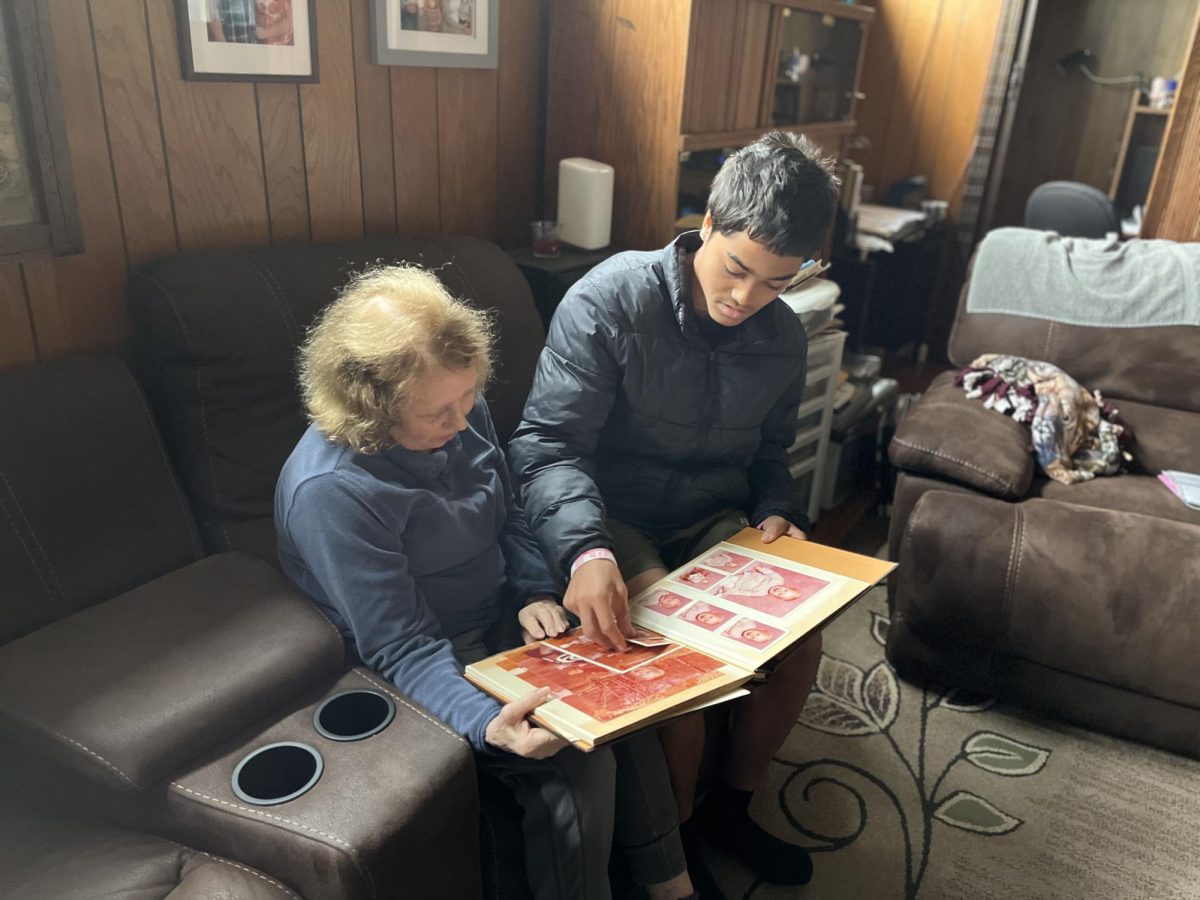Zero. That was the number of homicides East Palo totaled in 2023, 31 years after being named the U.S. murder capital in 1992. This statistic can only be viewed as a positive change, but the decrease in crime rate isn’t the only thing happening here.
Families that have lived in East Palo Alto for a long time are now facing the invisible force of gentrification. With companies like Facebook and Amazon establishing headquarters nearby, and just the general growth of companies in the Bay Area, the influx of higher-earning employees has driven up the cost of living, forcing long-term residents to leave the community.
According to census.gov, the median household income in East Palo Alto in 1979 was $14,147, which would be $56,770 accounting for inflation. In 2023 the census reported the median at a much higher household income of $103,248.
For some, like Palo Alto High School sophomore Eduardo Ontiveros, the raised prices have helped benefit quality of life.
“Back then [early 2010s], my street was more ghetto,” Ontiveros said. “We had this trap house full of crackheads, starting fights. But once their grandma who owned the house died, the price became too expensive for them to stay. The house got reconstructed and rebuilt, and my street is much safer for me and my family.”
However, the overall increase in safety isn’t the only effect of higher rent and pricing. According to long-time EPA resident Kristine Taylor, some aspects of her life have been tougher as people have been priced out. Having lived in East Palo Alto since 1975, she’s observed the societal changes that the statistics overshadow.
In the 1980’s and 90’s, when she raised her two kids and was a role model to many more, Taylor felt a sense of connectedness in the community, despite the daily dangers posed in the area.
“You could know everybody on your block, your kids knew everybody and everybody knew them, so we watched out for each other,” Taylor said. “It’s not that way at all anymore.”
Now, as her grandkids have grown up in the same area 30 years later, their upbringing has been very different.
“It’s in the reverse,” Taylor said. “It’s supposed to be a safer community, but kids don’t go out and play. I didn’t even know some people had kids. But when it was a rougher community, everybody’s kids were out.”
“[Back then] it was just a real tightness here that made me want to stay because of the people that I knew,” Taylor said. “Even though it was rougher, I kind of liked it better.”
Many now rent their homes instead of owning them, causing more instability.
“The people that bought the homes don’t live here, so they’re just making money renting,” Taylor said. “Plus, a lot of people have moved into the same house, there might be two or three families in one house. So that’s really changed too, because it used to just be family-owned homes, and you knew everybody on the street.”
Taylor said she paid $28,500 when she bought her house in 1975, which is around $170,000 in 2024 accounting for inflation. But now, similar houses in the same neighborhood are going for close to a million dollars.
“I wouldn’t pay a million dollars for a home here,” Taylor said. “I don’t think they’re worth a million dollars. A lot moved out when the homes went up and they wanted to get their money out for their home. Because when you pay what I paid, close to a million dollars is quite a benefit.”
With Facebook moving headquarters to the area in 2004, and Amazon building a campus shortly after, people have even been directly asked to leave.
“Facebook had people going door to door trying to get people to sell their homes so their workers could have a place to live,” Taylor said.
Although moving may seem like the best option, it’s easier said than done to uproot one’s life, especially for long-standing residents such as the Taylor family. If she left, she’d have to cut off all the roots to the city.
“If I left here, I’d have to really leave, because this has been my home for so long,” Taylor said.
For some, staying is simply no longer an option. Whether they would like to or not, the financial opportunity to rent out the houses is too big to pass up on. As a result, many of Taylor’s long-time friends, some of whom she called family, have been forced to move to areas like Stockton and Hayward, shifting their EPA family homes into rental properties.
“When I moved here, everybody owned their home,” Taylor said. “They took care of their homes, and now that’s really changed, because there’s so many renters. And the people that bought the homes don’t live here, so they’re just making money renting the homes. I know some of my neighbors, but I would never go over socially to their homes. Whereas the other ones [before significant price increases], it’s like their door was open. You just go and you’re welcome in.”
While overshadowed by the positives, such as the decrease in crime rate, shining a light on the underlying cause and what else is changing is important to understand the full picture.
